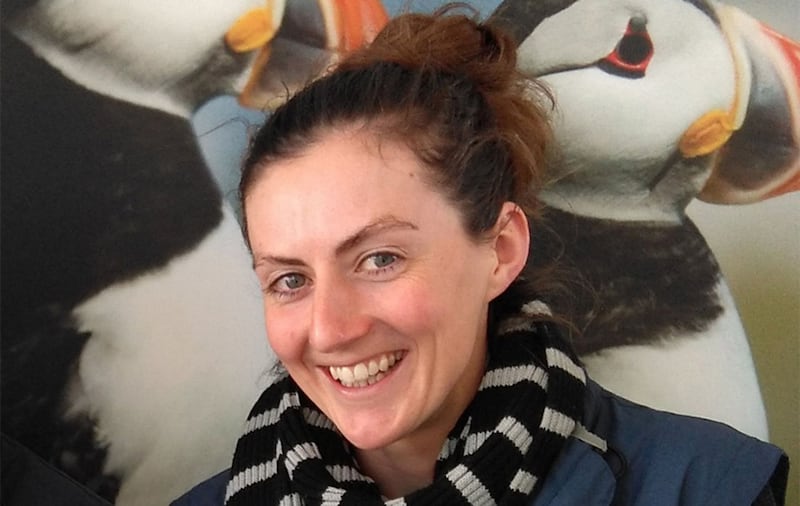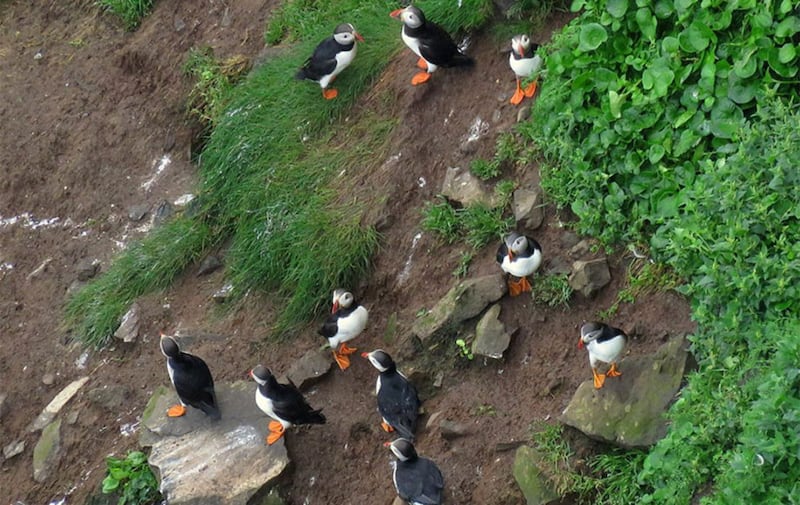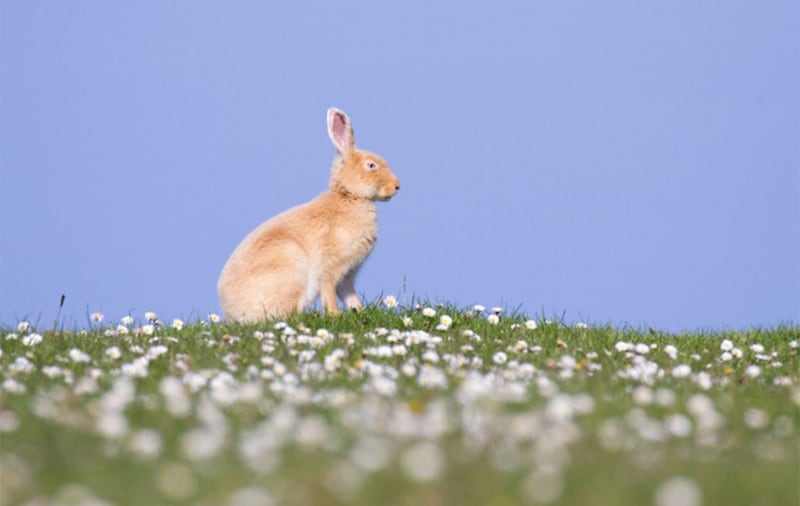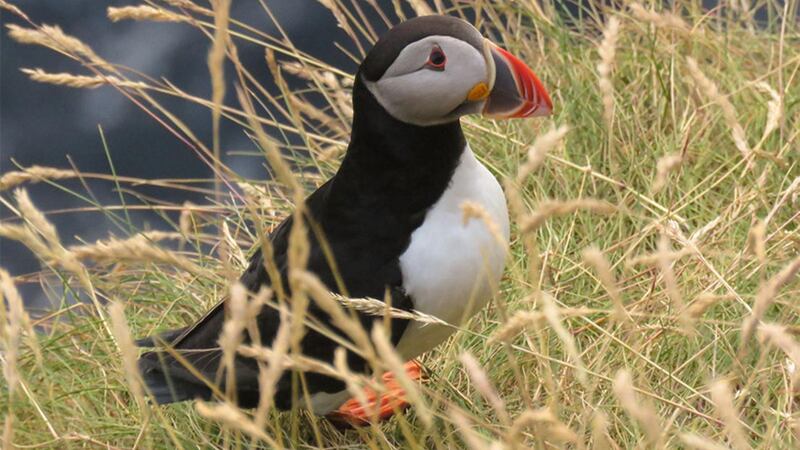Life on an island with 150 permanent residents and thousands of seabirds might sound like a challenge for many but for Lancashire-born Hazel Watson it's a dream come true.
The 36-year-old moved to Rathlin off the north Antrim coast with her partner just over two years ago.
As visitor experience manager at the RSPB Rathlin West Light Seabird Centre, she works alongside some fellow full-time staff, as well as casual workers and around 80 volunteers.

Ms Watson and her partner, who also works at the centre, live on Rathlin year-round.
With views towards Donegal and others towards Isla in Scotland, she said the island is an ideal place to settle.
"We just love it because we like to live in places where there's lots of birds and other wildlife, places where it's nice and scenic, nice and quiet," she said.
"We've lived in quite remote places before - it suits us living out here."
She said living on the island over the winter has allowed her to get to know other islanders.
"I think they know us as the mad bird people but it's nice because we try and let everyone know about what we've seen in terms of birds and wildlife and people have been telling us what they've seen," she said.
"It's been great. It's nice to be part of a small community here because you get to know everyone really well."

Rathlin is known for its impressive puffin colony but the island attracts thousands of other seabirds.
Ms Watson said the birds tend to spend most of their time in open water, only returning to Rathlin to prepare for nesting, which normally begins in May.
"We're quite lucky that our seabird colony has remained strong. Other colonies have seen their numbers decline," she said.
She added: "The puffins are special and everyone loves them. I've just been looking at a few puffins this morning. They have only just started coming into the colony," she said.
"But there's a lot of other great birdlife here as well. For me the guillemots are incredible because there's so many of them and the way that they breed is quite extraordinary.
"With the puffins, they hide away in the burrow a lot of the time. With the guillemots everything is out in the open.
"You can see everything from their courtship; you can actually witness them laying an egg if you're lucky enough; you can see them incubating the egg and fighting with each other. You see every stage of the breeding season which I find very, very interesting."
After a degree in biology, Ms Watson volunteered for several bird research projects.
Her passion for wildlife took her to Australia, where she spent several years working for a bird observatory, and later to New Zealand.
She said Rathlin is a wonderful spot for seeing a huge variety of wildlife.
"Quite frequently you see dolphins although you can never quite predict when they are going to show up," she said.
"Actually the ferry is a good place to see them, especially the express ferry because if the dolphins are around they will actively come and almost play with the ferry.
"We see them quite frequently out at the seabird centre. Last year we had some amazing sightings incredibly close in. Bottlenose dolphins and also Risso's dolphins which was quite unusual - they're generally not seen around here so we were excited to see that.
"We see Minke whales in the summer as well, generally a bit offshore when they're feeding. There are always porpoises. You've got lots of Irish hares on the island and they're wonderful to watch. Rathlin is also famous for the golden hare which is a genetic variation of the Irish hare but has golden fur and blue eyes - they're pretty special."
She encouraged visitors to spent some time on the island, including taking a trip to the lighthouse museum.
"There are some fabulous walking trails," she said. "If you just come over for the day it's difficult to do everything. I'd say to people come and stay for a few nights and really explore the island because there's a lot here."

The seabird centre relies on teams of volunteers who come during spring and summer.
Volunteers are given different roles, including greeting visitors and helping them spot their favourite birds from the viewing platform.
"Generally our volunteers come and stay for two weeks at a time because there's quite a lot to learn in the first week," she said.
"Once people are getting the hang of it they are a lot more confident in the second week and they get a lot more out of it if they stay for that length of time. If they are an experienced volunteer they don't need to stay for that long. Some people come and stay for a shorter time.
"They're helping us with visitors at the seabird centre so it's generally just talking to visitors, greeting them when they come, helping them find the puffins and all the other seabirds, giving them information and just helping us run the seabird centre."
Ms Watson said there are still opportunities for volunteers this year.
"We would love to hear from more people who would like to come and volunteer for us. There are still some spaces, particularly in the early part of the season in April and May.
"If anyone's interested in volunteering please get in touch with us."
For more information contact www.rspb.org.uk/get-involved/volunteering-fundraising/volunteer/volunteer-opportunities/opportunities/303/








